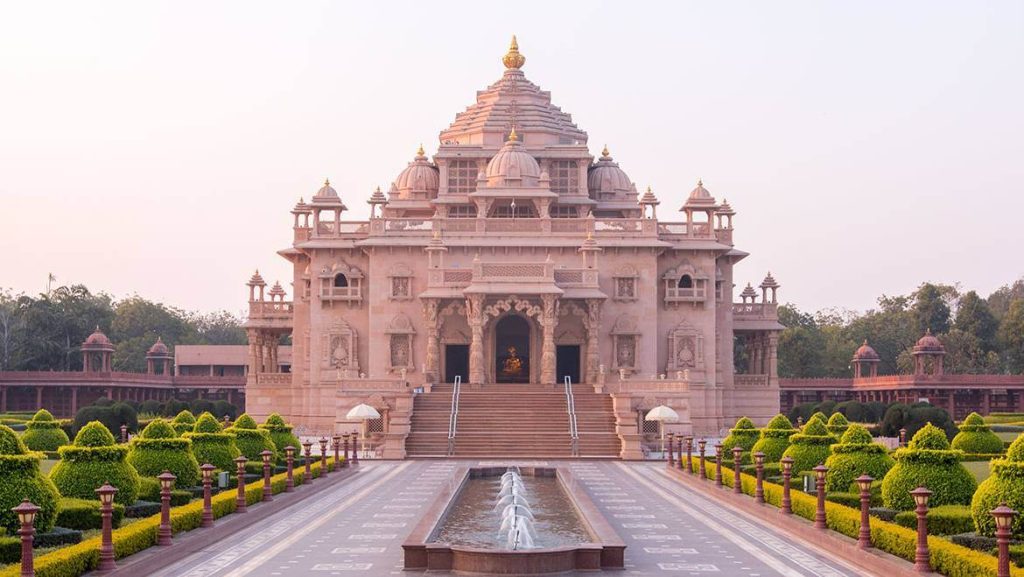Jawaharlal Nehru’s famous “Tryst with Destiny” speech set the tone for India’s future when the country gained independence in 1947. Nehru envisioned a nation that assisted the millions of people afflicted by inequality, poverty, disease, and ignorance. He called the establishment of institutions and public infrastructure the “Temples of Modern India.” But with the advent of divisive politics and the contentious events surrounding the Babri Masjid, this vision took a dramatic turn in the 1980s.
The Temples of Modern India:
Nehru’s “Temples of Modern India” vision included the public sector, health facilities, cultural academies, and educational establishments that supported scientific temper. The goal was to solve societal concerns and raise the general populace, making advancement a team effort. This goal was stated at the Bhakra Nangal dam’s inauguration, and it established the direction of the nation’s development.
The 1980s Shift:
India experienced a change in its political landscape in the 1980s. Divisive politics came to the fore with the response to the Shah Bano case and the Mandal Commission’s implementation. Nehru’s secular ideal was abandoned by the Bharatiya Janata Party (BJP), which sprang from the Rashtriya Swayamsevak Sangh (RSS) and adopted Hindu nationalist philosophy.
Babri Masjid and Temple Politics:
Temple politics revolved around the Babri Masjid dispute, spearheaded by the BJP. Despite giving off a moderate appearance at first, Atal Bihari Vajpayee was firmly entrenched in RSS doctrine. The plan to construct a temple at the site of the Babri mosque was signalled by the term “Mandir Vahin Banayenge,” which was made popular by his successor, Lal Krishna Advani.
Advani started the Ram Rath Yatra, which gathered impetus after the Mandal Commission’s recommendations. Even though it was put on hold because of political interference, the mosque’s 1992 demolition signalled a sea change in Indian politics. The judiciary awarded the entire Babri Mosque land for the construction of a temple, based more on religion than legal reasons.
Aftermath and communal tensions
Following the demolition of the Babri Masjid, sectarian violence increased, and the BJP gained political prominence. The repeal of Article 370 and the enactment of the Citizenship Amendment Act (CAA) in 2019, which reshaped Indian citizenship concepts based on Hindutva, contributed to the escalation of communal hostilities.
Polarisation and Ghettoization:
Research scholar A.M. Singh claims that the political rhetoric of the BJP has increased Hindu-Muslim communal tensions, resulting in the ghettoization of the Muslim population. The BJP government has redefined the secular fabric contained in the Indian Constitution, reshaping the destiny and legacy of India’s secularism.
Opening of the Ram Temple:
With the opening of the Ram Temple, there is a push to get a lot of Hindus involved. Both domestically and internationally, the event has drawn notice, and NRIs have organised a number of programmes in advance. The prime minister will officially open the temple, which is being built thanks to donations from both domestic and international sources. This marks a change in the officially secular state’s position.
Disputations Regarding the Inauguration:
The intricate nature of the opening of the Ram Temple is highlighted by disputes surrounding the attendees. After being first told not to go, important participants in the demolition of the Babri Masjid, such as Advani and Joshi, were eventually invited. This underlines how the event’s religious and political meanings are entwined.
At its peak, Temple Politics:
The opening of the Ram Temple symbolises the pinnacle of temple politics, solidifying division and maybe bringing about electoral benefits. To highlight the political importance of the event, special trains and buses are being planned.
A Digression from Nehru’s Objective:
While India prepares for the inauguration, it is important to consider Nehru’s concept of the “Temples of Modern India.” It appears that blind faith and increased religiosity have taken the place of the emphasis on scientific temper and the wellbeing of the last person in line. The erection of temples in Ayodhya, Kashi, and Mathura has shaped the political trajectory of India, deviating from Nehru’s principles.
In conclusion, from Nehru’s concept of the “Temples of Modern India” to the opening of the Ram Temple, there has been a significant change in the political and social climate of India. The narrative has been transformed by the events surrounding the Babri Masjid and the subsequent emergence of temple politics, which prioritise religious symbols over Nehru’s welfare-oriented objectives. The Ram Temple’s rise to prominence forces a critical analysis of the country’s history and the principles that shape its identity in the twenty-first century.
